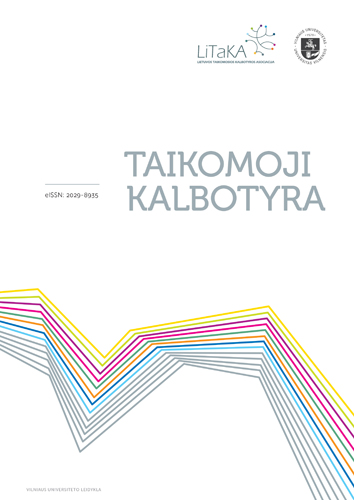Etnografinio metodo taikymas sociolingvistiniuose (jaunimo kalbos) tyrimuose
Ethnography in sociolinguistic studies of youth language
Author(s): Aurelija ČekuolytėSubject(s): Sociolinguistics, Cultural Anthropology / Ethnology
Published by: Vilniaus Universiteto Leidykla
Keywords: ethnographic method; linguistic variable; youth language;sociolinguistic data;
Summary/Abstract: In Lithuanian sociolinguistics ethnography is a new method; there are no comprehensive ethnographic studies. The main purpose of this paper is to introduce the reader to ethnography and to show why it is important to include ethnography in linguistic studies and how this method can enrich the analysis of linguistic material. When applying the ethnographic method it is not only possible to provide a picture of the distribution of linguistic variables in the community, but also to discover the social meaning which is associated with those variables. What is unique about ethnography is that it allows the scientist to discover social meanings instead of presupposing them and to examine the construction and organization of the social meaning of linguistic variables. Even though ethnographic studies are often treated as case studies, the results of a well-constructed ethnographic study are reliable and replicable, for instance, the ethnographically discovered social categories and social meanings, associated with them, can be tested in a different community with a help of match-guise technique.Following the sociolinguistic wave theory, I explain how and why ethnography has been employed in sociolinguistic studies. The studies in the first sociolinguistic wave applied survey and quantitative methods to examine the relation between linguistic variation and the traditional social categories – class, age, sex, and ethnicity. However, the quantitative methods were not sufficient enough in explaining which social mechanisms caused linguistic variation. Studies in the second wave employed ethnography in order to find the relation between linguistic variation and locally determined social categories. Studies in the third wave departed from the dialect-based approach of the first two waves, employed stylistic practice approach and examined any linguistic material that is socially meaningful in the community.I also discuss the main aspects of ethnographic method: participant observation, fieldnotes, ethnographic interview and other types of interviews. I come in with advice for researchers who plan to use ethnography in their research. The examples of ethnographic studies that I’m using in my paper are mostly taken from studies of youth language. Nevertheless, the paper can also be useful to any researcher who is willing to conduct an ethnographic sociolinguistic study.
Journal: Taikomoji kalbotyra
- Issue Year: 2012
- Issue No: 1
- Page Range: 1-18
- Page Count: 18
- Language: Lithuanian

